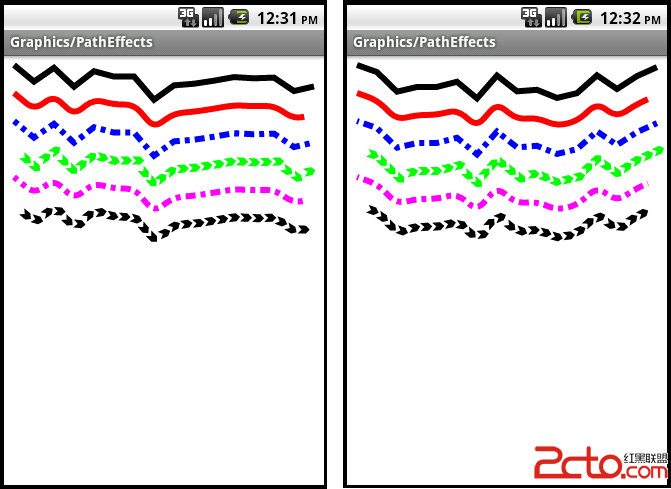android recovery 主系统代码分析
我们已经清楚了如何进入正常模式和Recovery模式已有深刻理解了,假设进入了Recovery模式,那么其核心代码是怎么做的呢?
代码路径在 android 源码的根路径: bootable\recovery 其入口文件就是 recovery.c 中 main函数
下面就开始逐步了解其Recovery的设计思想:
static const char *COMMAND_FILE = "/cache/recovery/command";
static const char *INTENT_FILE = "/cache/recovery/intent";
static const char *LOG_FILE = "/cache/recovery/log";
注解里面描述的相当清楚:
* The recovery tool communicates with the main system through /cache files.
* /cache/recovery/command - INPUT - command line for tool, one arg per line
* /cache/recovery/log - OUTPUT - combined log file from recovery run(s)
* /cache/recovery/intent - OUTPUT - intent that was passed in
static const char *LAST_LOG_FILE = "/cache/recovery/last_log";
static const char *LAST_INSTALL_FILE = "/cache/recovery/last_install";
static const char *CACHE_ROOT = "/cache";
static const char *SDCARD_ROOT = "/sdcard";
下面的描述针对写入的 command 有大致的介绍:
* The arguments which may be supplied in the recovery.command file:
* --send_intent=anystring - write the text out to recovery.intent
* --update_package=path - verify install an OTA package file
* --wipe_data - erase user data (and cache), then reboot
* --wipe_cache - wipe cache (but not user data), then reboot
* --set_encrypted_filesystem=on|off - enables / diasables encrypted fs
两种升级模式步骤说明:
* After completing, we remove /cache/recovery/command and reboot.
* Arguments may also be supplied in the bootloader control block (BCB).
* These important scenarios must be safely restartable at any point:
*
* FACTORY RESET
* 1. user selects "factory reset"
* 2. main system writes "--wipe_data" to /cache/recovery/command
* 3. main system reboots into recovery
* 4. get_args() writes BCB with "boot-recovery" and "--wipe_data"
* -- after this, rebooting will restart the erase --
* 5. erase_volume() reformats /data
* 6. erase_volume() reformats /cache
* 7. finish_recovery() erases BCB
* -- after this, rebooting will restart the main system --
* 8. main() calls reboot() to boot main system
*
* OTA INSTALL
* 1. main system downloads OTA package to /cache/some-filename.zip
* 2. main system writes "--update_package=/cache/some-filename.zip"
* 3. main system reboots into recovery
* 4. get_args() writes BCB with "boot-recovery" and "--update_package=..."
* -- after this, rebooting will attempt to reinstall the update --
* 5. install_package() attempts to install the update
* NOTE: the package install must itself be restartable from any point
* 6. finish_recovery() erases BCB
* -- after this, rebooting will (try to) restart the main system --
* 7. ** if install failed **
* 7a. prompt_and_wait() shows an error icon and waits for the user
* 7b; the user reboots (pulling the battery, etc) into the main system
* 8. main() calls maybe_install_firmware_update()
* ** if the update contained radio/hboot firmware **:
* 8a. m_i_f_u() writes BCB with "boot-recovery" and "--wipe_cache"
* -- after this, rebooting will reformat cache & restart main system --
* 8b. m_i_f_u() writes firmware image into raw cache partition
* 8c. m_i_f_u() writes BCB with "update-radio/hboot" and "--wipe_cache"
* -- after this, rebooting will attempt to reinstall firmware --
* 8d. bootloader tries to flash firmware
* 8e. bootloader writes BCB with "boot-recovery" (keeping "--wipe_cache")
* -- after this, rebooting will reformat cache & restart main system --
* 8f. erase_volume() reformats /cache
* 8g. finish_recovery() erases BCB
* -- after this, rebooting will (try to) restart the main system --
* 9. main() calls reboot() to boot main system
从上面的几段注解中,基本上就明白的 Recovery 是如何工作的啦。下面就从具体代码开始一步步分析。
1、recovery main 函数
int
main(int argc, char **argv) {
time_t start = time(NULL);
// If these fail, there's not really anywhere to complain...
freopen(TEMPORARY_LOG_FILE, "a", stdout); setbuf(stdout, NULL);
freopen(TEMPORARY_LOG_FILE, "a", stderr); setbuf(stderr, NULL);
printf("Starting recovery on %s", ctime(&start));
int
main(int argc, char **argv) {
time_t start = time(NULL);
// If these fail, there's not really anywhere to complain...
freopen(TEMPORARY_LOG_FILE, "a", stdout); setbuf(stdout, NULL);
freopen(TEMPORARY_LOG_FILE, "a", stderr); setbuf(stderr, NULL);
printf("Starting recovery on %s", ctime(&start));
将标准输出和标准错误输出重定位到"/tmp/recovery.log",如果是eng模式,就可以通过adb pull /tmp/recovery.log, 看到当前的log信息,这为我们提供了有效的调试手段。
ui_init();
一个简单的基于framebuffer的ui系统,叫miniui 主要建立了图像部分(gglInit、gr_init_font、framebuffer)及进度条和事件处理(input_callback)
load_volume_table();
根据 /etc/recovery.fstab 建立分区表
// command line args come from, in decreasing precedence:
// - the actual command line
// - the bootloader control block (one per line, after "recovery")
// - the contents of COMMAND_FILE (one per line)
get_args(&argc, &argv);
从misc 分区以及 CACHE:recovery/command 文件中读入参数,写入到argc, argv (get_bootloader_message) 并有可能写回 misc 分区(set_bootloader_message)
做完以上事情后就开始解析具体参数:
while ((arg = getopt_long(argc, argv, "", OPTIONS, NULL)) != -1) {
switch (arg) {
case 'p': previous_runs = atoi(optarg); break;
case 's': send_intent = optarg; break;
case 'u': update_package = optarg; break;
case 'w': wipe_data = wipe_cache = 1; break;
case 'c': wipe_cache = 1; break;
case 't': ui_show_te
补充:移动开发 , Android ,




